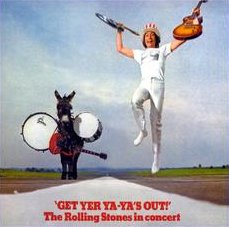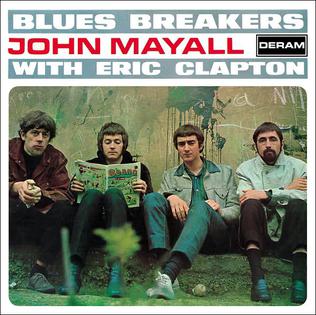
Highway 61 Revisited is the sixth studio album by American singer-songwriter Bob Dylan, released on August 30, 1965, by Columbia Records. Having until then recorded mostly acoustic music, Dylan used rock musicians as his backing band on every track of the album, except for the closing track, the 11-minute ballad "Desolation Row". Critics have focused on the innovative way Dylan combined driving, blues-based music with the subtlety of poetry to create songs that captured the political and cultural chaos of contemporary America. Author Michael Gray has argued that, in an important sense, the 1960s "started" with this album.

I Never Loved a Man the Way I Love You is the tenth studio album by American singer Aretha Franklin released on March 10, 1967, by Atlantic Records. It was Franklin's first release under her contract with the label, following her departure from Columbia Records after nine unsuccessful Jazz standard albums, and marked a commercial breakthrough for her, becoming her first top 10 album in the United States, reaching number 2 on the Billboard 200. Two singles were released to promote the album: "Respect" and "I Never Loved a Man ". The former topped the Billboard Hot 100, while latter reached the top 10.

The Band is the second studio album by the Canadian-American rock band the Band, released on September 22, 1969. It is also known as The Brown Album. According to Rob Bowman's liner notes for the 2000 reissue, The Band has been viewed as a concept album, with the songs focusing on people, places and traditions associated with an older version of Americana. Thus, the songs on this album draw on historic themes for "The Night They Drove Old Dixie Down", "King Harvest " and "Jawbone".

Pretzel Logic is the third studio album by American rock band Steely Dan, released by ABC Records on February 20, 1974. It was recorded at the Village Recorder in West Los Angeles, California, with producer Gary Katz. The album was Steely Dan's last to be made and released while the group was still an active touring band, as well as the final album to feature the band's full quintet-lineup of Becker, Fagen, Denny Dias, Jim Hodder, and Jeff "Skunk" Baxter, though it also features significant contributions from many prominent Los Angeles-based studio musicians.

Let It Bleed is the eighth British and tenth American studio album by the English rock band the Rolling Stones, released 28 November 1969 on London Records in the United States and shortly thereafter by Decca Records in the United Kingdom. Released shortly after the band's 1969 American Tour, it is the follow-up to 1968's Beggars Banquet, and like that album is a return to the group's more blues-oriented approach that was prominent in the pre-Aftermath (1966) period of their career. Additional sounds on the album draw influence from gospel, country blues and country rock.

Tapestry is the second studio album by American singer-songwriter Carole King, released in 1971 on Ode Records and produced by Lou Adler. The lead singles from the album—"It's Too Late" and "I Feel the Earth Move"—spent five weeks at number one on both the Billboard Hot 100 and Easy Listening charts.

The Sun Sessions is a compilation album by American singer Elvis Presley, issued by RCA Records in 1976. The album contains Presley's earliest commercial recordings, made in Memphis, Tennessee for Sun Records in 1954 and 1955. RCA issued the album in the UK in 1975 under the title The Sun Collection. The album features liner notes by Roy Carr of the New Musical Express. The Sun Sessions features most of the tracks Elvis recorded for Sun Records and produced by Sam Phillips, the head of Sun Studios. The Sun Sessions reached number two on the Billboard Country Albums and number 1 on the Cashbox Country Albums charts.

Beggars Banquet is the seventh British and ninth American studio album by the English rock band the Rolling Stones, released on 6 December 1968 by Decca Records in the United Kingdom and London Records in the United States. It was the first Rolling Stones album produced by Jimmy Miller, whose production work formed a key aspect of the group's sound throughout the late 1960s and early 1970s.

Sail Away is the third studio album by Randy Newman, released on May 23, 1972. It was produced by Lenny Waronker and Russ Titelman and issued on Reprise Records. While all of its songs were written and composed by Newman, several had already been recorded by other artists.

The Genius of Ray Charles is a 1959 Ray Charles album, released in October by Atlantic Records, the seventh album since the debut Ray Charles in 1957. The album consists of swinging pop with big band arrangements. It comprises a first half of big band songs and a second half of string-backed ballads. The Genius of Ray Charles sold fewer than 500,000 copies and charted at number 17 on the Billboard 200. "Let the Good Times Roll" and "Don't Let the Sun Catch You Cryin'" were released as singles in 1959.

Live at the Apollo is the first live album by James Brown and the Famous Flames, recorded at the Apollo Theater in Harlem in October 1962 and released in May 1963 by King Records. Capturing Brown's popular stage show for the first time on record, the album was a major commercial and critical success and cemented his status as a leading R&B star.

Get Yer Ya-Ya's Out!: The Rolling Stones in Concert is the second live album by the Rolling Stones, released on 4 September 1970 on Decca Records in the UK and on London Records in the United States. It was recorded in New York City and Baltimore in November 1969, just before the release of Let It Bleed. It is the first live album to reach number 1 in the UK. It was reported to have been issued in response to the well-known bootleg Live'r Than You'll Ever Be. This was also the band's final release under the Decca record label and not under its own label Rolling Stones Records.

Cheap Thrills is the second studio album by American rock band Big Brother and the Holding Company, issued by Columbia Records in 1968. Cheap Thrills was the band's final album with lead singer Janis Joplin before she left to begin a solo career. For Cheap Thrills, the band and producer John Simon incorporated recordings of crowd noises to give the impression of a live album, for which it was subsequently mistaken by many listeners. Only "Ball and Chain" was actually recorded in concert at the Winterland Ballroom.

The World Is a Ghetto is the fifth album by American band War, released in late 1972 on United Artists Records. The album attained the number one spot on Billboard, and was Billboard magazine's Album of the Year as the best-selling album of 1973. In addition to being Billboard's #1 album of 1973, the album was ranked number 444 on Rolling Stone magazine's original list of the 500 greatest albums of all time. The title track became a gold record.

Blues Breakers, colloquially known as The Beano Album, is the debut studio album by the English blues rock band John Mayall & the Bluesbreakers, originally credited to John Mayall with Eric Clapton. Produced by Mike Vernon and released in 1966 by Decca Records (UK) and London Records (US), it pioneered a guitar-dominated blues-rock sound.

Completely Well, released in 1969, is a studio album by the blues guitarist B. B. King. It is notable for the inclusion of "The Thrill Is Gone", which became a hit on both the R&B/soul and pop charts and which earned him a Grammy Award for Best Male R&B Vocal Performance in 1970.

Indianola Mississippi Seeds is B. B. King's eighteenth studio album. It was released in October 1970 on ABC Records on LP and May 1989 on MCA Records on CD. On this album B. B. King mixed elements of blues and rock music. Producer Bill Szymczyk decided to follow up on the success of the hit "The Thrill Is Gone" by matching King with a musical all-star cast. The result was one of King's most critically acclaimed albums and one of the most highly regarded blues crossover albums of all time.

Live in Cook County Jail is a 1971 live album by American blues musician B.B. King, recorded on September 10, 1970, in Cook County Jail in Chicago. Agreeing to a request by jail warden Winston Moore, King and his band performed for an audience of 2,117 prisoners, most of whom were young black men. King's set list consisted mostly of slow blues songs, which had been hits earlier in his career. When King told ABC Records about the upcoming performance, he was advised to bring along press and recording equipment.

Guess Who is a studio album by B. B. King. It was released in 1972 by ABC Records.

Blues Is King is a live album by blues musician, B.B. King. It was recorded in Chicago in 1966 and released by the BluesWay label in 1967.




















